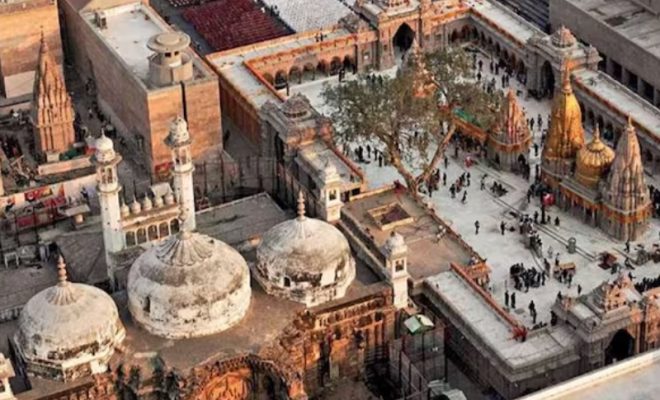Gyanvapi Case: Allahabad High Court Finalizes, Asks to Restore Temple

The Allahabad High Court has finalized the case of Gyanvapi Temple in Varanasi. This site, rich in history and cultural significance, has been the center of a longstanding dispute.
The Gyanvapi site, adjacent to the revered Kashi Vishwanath Temple, is at the heart of this controversy. The contention revolves around the Gyanvapi Mosque which was constructed by Mughal Invader Aurangzeb in the 17th century, by demolishing the Temple. A key point of the dispute is whether this mosque was built over an ancient Indian temple.
For years, this matter has sparked debates and legal battles between Hindu and Muslim communities. The Hindu side asserts that part of the Kashi Vishwanath temple was demolished to build the mosque. Conversely, the Muslim side believes the mosque predates Aurangzeb’s reign.
The Archaeological Survey of India (ASI) conducted a scientific survey of the mosque complex. They used advanced, non-invasive techniques like ground penetrating radar to understand what lies beneath the mosque. This survey aimed to verify if the mosque was indeed constructed over a pre-existing temple.
Now, coming to the recent decision by the Allahabad High Court: The court dismissed a set of petitions filed by the Muslim side. These petitions questioned the legality of a civil suit in a Varanasi court that seeks the restoration of a temple at the Gyanvapi site.
The argument from the Muslim parties was that the suit was barred under the 1991 Places of Worship Act. This act generally freezes the religious character of holy sites as they were in 1947, with the notable exception of the Ayodhya case.
Also Read: What Is The Shri Krishna Janmbhumi Versus Shahi Idgah Mathura Dispute?
However, the court has decided that the suit is maintainable and not barred by this act. The court stated that the mosque complex must have either a Muslim or a Hindu character, not both.
The court’s decision ensures a fair hearing of both sides in a long-standing dispute. By not dismissing the case under the 1991 Places of Worship Act, the court is allowing a detailed examination of historical claims and evidence.
This approach respects the legal process and acknowledges the cultural and historical significance of the site for both communities, promoting a balanced and thorough judicial examination.



